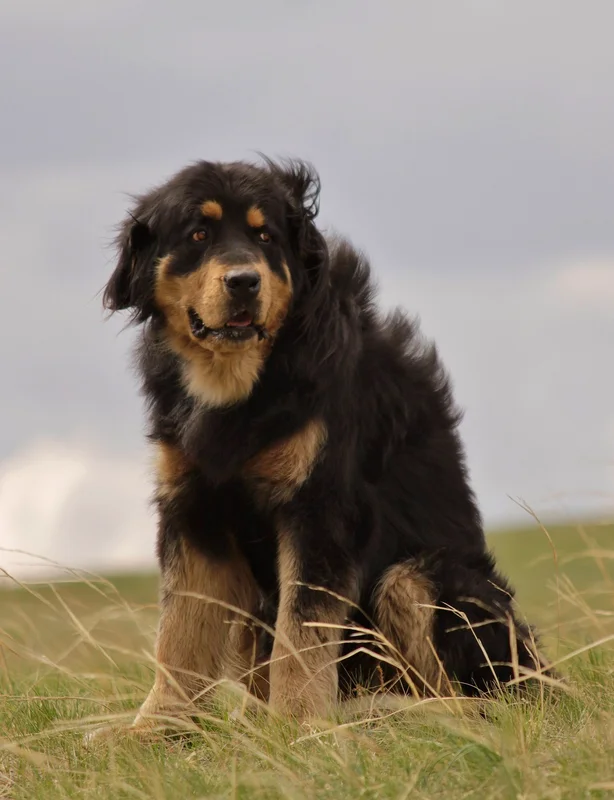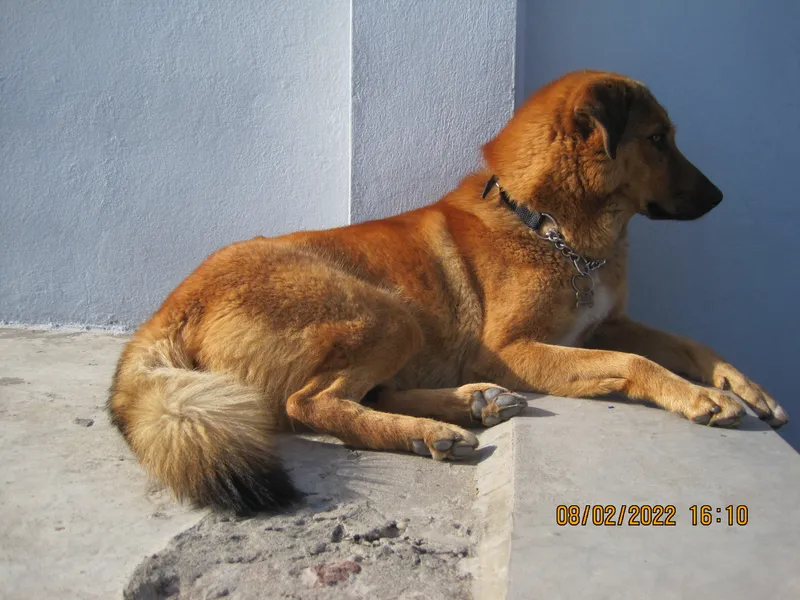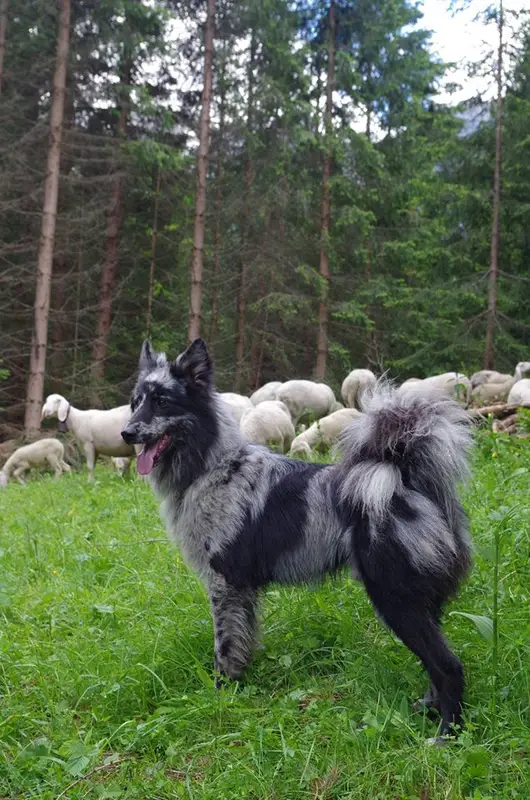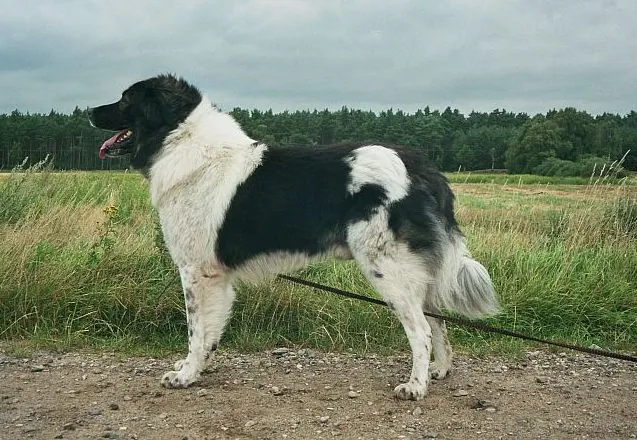Georgian Shepherd
The Georgian Shepherd is a large, ancient working breed from Georgia, known for its loyalty, protective instincts, and impressive stature. Ideal for guarding livestock and families.
Overview
🐕Breed Overview
✨Key Traits
💡What Makes Georgian Shepherd Special
Georgian Shepherds are characterized by their impressive size and strength, making them one of the largest dog breeds. Their guarding instincts are deeply ingrained, and they are known to be territorial, which can be both a strength and a challenge in social settings.
Their intelligence and ability to learn quickly make them suitable for various tasks, including obedience training and dog sports. However, their assertive nature requires experienced handling to ensure they are well-socialized and trained from a young age.
With the right guidance, they can be loyal companions and effective protectors.
The Georgian Shepherd, also known as the Georgian Mountain Dog or Nagazi, is a majestic and powerful breed originating from the rugged Caucasus Mountains of Georgia. This ancient working breed has been a loyal companion to shepherds for centuries, serving as a guardian for livestock against predators such as wolves and bears. With a strong, muscular build and a commanding presence, Georgian Shepherds are among the largest dog breeds in the world, falling into the molosser category.
Males typically stand between 75-85 cm tall and weigh between 65-85 kg, while females are slightly smaller. Their assertive and brave nature makes them excellent protectors, but they require proper training and socialization to thrive in family settings. The breed's history is rich and intertwined with Georgian culture, where they are celebrated for their loyalty and protective instincts.
Despite facing challenges during the Soviet era, efforts to preserve the breed have led to a resurgence in popularity, both in Georgia and internationally. Georgian Shepherds are known for their intelligence and strong work ethic, making them suitable for various roles, including guarding, herding, and companionship. Living with a Georgian Shepherd requires commitment, as they need ample exercise and mental stimulation to prevent boredom and behavioral issues.
They thrive in spacious environments and are best suited for families who can provide them with the attention and training they need. With proper care, training, and socialization, Georgian Shepherds can be loving and devoted family members, known for their protective nature and strong bonds with their human companions.
🎉Fun Facts
Georgian Shepherds are known for their impressive guarding abilities, often being able to deter predators with their mere presence.
The breed has a rich history, having been used for centuries in the Caucasus region to protect livestock from wolves and bears.
They have a strong bond with their families and are known to be gentle and affectionate with children.
Breed Characteristics
Family & Friends
Good Behavior
Get Up & Go
Household Harmony
Temperament & Personality
✨Key Traits
🐕Core Temperament
The Georgian Shepherd has a strong temperament characterized by loyalty, protectiveness, and intelligence. They are naturally inclined to guard their territory and family, which can lead to territorial behaviors if not properly socialized.
While they are generally good with children and can be affectionate with their families, they may be wary of strangers. Early socialization and training are crucial to help them develop into well-adjusted adults.
With the right guidance, they can be gentle companions, but their assertive nature requires experienced handling to ensure they thrive in a family environment.
💫Personality Profile
The Georgian Shepherd is known for its loyalty and protective instincts. They are assertive and brave, making them excellent guardians for families and livestock.
While they can be reserved with strangers, they are affectionate and gentle with their family members, especially children. Their intelligence allows them to learn commands quickly, but they can also exhibit stubbornness, requiring consistent training and socialization.
This breed thrives on companionship and enjoys being part of family activities, making them well-suited for families who can provide them with the attention they need.
🔊Vocal Tendencies
Georgian Shepherds are generally moderate barkers. They may bark to alert their owners of strangers or unusual activity, but they are not known to bark excessively.
Their vocalizations can vary based on their mood and environment; for instance, they may bark more when excited or when they perceive a threat. Proper training can help manage their barking tendencies, ensuring they communicate effectively without becoming overly vocal.
Overall, their noise level is manageable, making them suitable for families and homes.
Affection & Social Traits
Energy & Activity
Communication Style
Care Requirements
🏃♂️Exercise Requirements
Daily Exercise
The Georgian Shepherd is a large and powerful breed that requires a significant amount of exercise to maintain its physical and mental well-being. Ideally, an adult Georgian Shepherd should engage in at least 90 minutes of exercise daily. This can include a combination of brisk walks, running, and playtime in a secure area.
Activities such as fetching, agility training, and swimming are also beneficial, as they cater to the breed's athletic nature. Puppies should have shorter, more frequent exercise sessions to avoid overexertion, while senior dogs may require gentler activities to accommodate their aging joints. Regular exercise helps prevent obesity, supports cardiovascular health, and reduces behavioral issues stemming from pent-up energy.
Insufficient exercise can lead to destructive behaviors, anxiety, and health problems, making it crucial for owners to establish a consistent exercise routine.
Preferred Activities
🏠Living & Adaptability
Space Requirements
Georgian Shepherds thrive in spacious environments due to their large size and high energy levels. Ideally, they should have access to a large, securely fenced yard where they can roam and play freely.
While they can adapt to living in a house with a smaller yard, it is essential that they receive ample outdoor time and exercise. Apartment living is not suitable for this breed, as they require space to move around and engage in physical activities.
Owners in smaller living situations should ensure they can provide daily outdoor exercise and mental stimulation to prevent boredom and anxiety.
Climate Preference
🍲Feeding Guide
Schedule
Food Types
Portion Size
Special Nutritional Needs
Georgian Shepherds require a balanced diet rich in protein to support their muscular build. It's essential to choose high-quality dog food that meets their nutritional needs, particularly during their growth stages.
Owners should monitor their weight and adjust portion sizes accordingly to prevent obesity, which can lead to health issues. Additionally, supplements such as omega fatty acids can promote healthy skin and coat.
✨Grooming Requirements
Grooming Overview
The grooming needs of the Georgian Shepherd vary based on coat length. The long-haired variety requires regular brushing at least once a week to prevent matting and to remove loose hair.
During shedding seasons, more frequent brushing may be necessary. Bathing should be done as needed, typically every few months or when the dog gets particularly dirty.
The short-haired variety requires less maintenance, with occasional brushing to remove loose hair. Regular nail trimming, ear cleaning, and dental care are also essential to maintain overall health and hygiene.
Care Schedule
Brush long-haired dogs weekly; short-haired dogs bi-weekly; bathe as needed, typically every 2-3 months.
Health Profile
⚕️Health Care
Regular health care is vital for the longevity of Georgian Shepherds. Routine veterinary check-ups, vaccinations, and preventive treatments for parasites are essential to maintain optimal health.
Early detection of health issues through regular examinations can lead to more effective management and treatment. Owners should also be proactive in monitoring their dog's weight, dental health, and overall condition, adjusting care routines as needed throughout different life stages.
Health Issues Overview
⏳Average Lifespan
Genetic Factors
Genetics significantly impact the lifespan of the Georgian Shepherd. Like many large breeds, they are predisposed to certain hereditary health issues, such as hip dysplasia and heart problems.
Responsible breeding practices that prioritize genetic diversity can help reduce the prevalence of these conditions. Potential owners should seek reputable breeders who conduct health screenings and provide health guarantees for their puppies.
Understanding the genetic background of the dog can help owners anticipate potential health challenges and take proactive measures.
Living Conditions
The lifespan of a Georgian Shepherd can be influenced by various environmental factors. Dogs living in spacious, safe environments with regular exercise and mental stimulation tend to live longer, healthier lives.
Access to fresh air and outdoor activities can enhance their overall well-being. Conversely, dogs kept in confined spaces with limited exercise may experience health issues such as obesity and anxiety, which can shorten their lifespan.
Proper nutrition, regular veterinary care, and a loving environment also play crucial roles in promoting longevity.
🏥Common Health Issues
Hip Dysplasia
Warning Signs
🔬Diagnosis
X-rays and physical examination by a veterinarian.
💊Treatment
Medications, weight management, and in severe cases, surgery.
📝Management Tips
Maintain a healthy weight, provide joint supplements, and avoid excessive exercise during growth stages.
Obesity
Warning Signs
🔬Diagnosis
Physical examination and weight assessment by a veterinarian.
💊Treatment
Dietary changes and increased exercise.
📝Management Tips
Monitor diet and exercise, provide regular physical activity, and consult a veterinarian for weight management plans.
Heart Problems
Warning Signs
🔬Diagnosis
Echocardiogram and veterinary examination.
💊Treatment
Medications and lifestyle adjustments.
📝Management Tips
Regular veterinary check-ups, maintain a healthy lifestyle, and monitor for symptoms.
🛡️Preventive Care
🔬Hip Evaluation
Hip Evaluation assesses the dog's hip joints for dysplasia and other abnormalities, which are common in large breeds.
📅 At 12 months and annually thereafter.
🔬Cardiac Evaluation
Cardiac Evaluation checks for heart conditions that may affect the breed, especially as they age.
📅 Annually after 5 years of age.
🔬Thyroid Testing
Thyroid Testing screens for hypothyroidism, which can affect energy levels and weight.
📅 Every 1-2 years, starting at 2 years of age.
Training
🧠Intelligence & Trainability
💪Work Drive
Georgian Shepherds possess a strong work drive, stemming from their historical role as livestock guardians. They thrive when given tasks to perform, whether it's herding, guarding, or participating in dog sports.
Providing them with jobs or activities that engage their natural instincts is vital for their mental well-being. Activities such as agility training, obedience competitions, or even simple tasks like fetching items can keep them mentally stimulated and satisfied.
Without adequate mental engagement, they may become bored and exhibit undesirable behaviors.
⚠️Training Considerations
Georgian Shepherds can exhibit behavioral challenges, particularly if not properly socialized from a young age. Their assertive nature may lead to dominance issues, especially with other dogs. They can also be territorial, which may result in aggressive behavior towards strangers or unfamiliar animals.
To mitigate these challenges, early socialization is crucial. Exposing them to various environments, people, and other animals during their formative months can help them develop into well-rounded adults. Consistent training using positive reinforcement techniques is essential to establish boundaries and encourage good behavior.
Owners should be prepared to invest time and effort into training and socialization to prevent potential issues.
📝Training Tips
Training a Georgian Shepherd requires patience, consistency, and a firm yet gentle approach. Positive reinforcement methods, such as treats and praise, are effective in motivating this intelligent breed.
Start with basic obedience commands, gradually introducing more complex tasks as the dog becomes more confident. Socialization should be a priority, exposing the dog to different people, environments, and other animals to reduce territorial tendencies.
Engaging in activities that challenge their minds, such as puzzle toys or obedience training, can help keep them mentally stimulated. Regular training sessions should be short and enjoyable to maintain the dog's interest and focus.
History & Heritage
📜Origin Story
The Georgian Shepherd, known locally as 'Nagazi,' has its roots deeply embedded in the mountainous terrain of Georgia. This ancient breed was developed by local shepherds who needed a reliable guardian for their flocks against wolves and other predators.
The harsh climate and rugged landscape of the Caucasus Mountains played a crucial role in shaping the breed's physical and behavioral traits. Over the centuries, the Georgian Shepherd has been revered not only for its strength and bravery but also for its loyalty to its human companions.
Despite facing challenges during the Soviet era, including crossbreeding and a decline in population, dedicated enthusiasts have worked tirelessly to revive and promote the breed. Today, the Georgian Shepherd is celebrated as a national treasure, embodying the spirit and heritage of the Georgian people.
⏳Development History
The Georgian Shepherd has a rich history that dates back centuries, originating in the mountainous regions of Georgia. This breed is closely related to the Caucasian Shepherd Dog and has been used primarily as a livestock guardian.
Over time, the breed has been shaped by the harsh conditions of the Caucasus Mountains, leading to its robust physique and strong guarding instincts. The breed's development has been influenced by selective breeding practices aimed at enhancing its protective qualities and adaptability to the environment.
In recent years, efforts have been made to preserve the pure lineage of the Georgian Shepherd, particularly after the Soviet era, when many dogs were lost or crossbred with other breeds. Today, the breed is recognized for its unique characteristics and is actively promoted by enthusiasts and breeders in Georgia.
🛡️Purpose & Historical Role
Traditionally, the Georgian Shepherd has served as a livestock guardian, protecting sheep and other animals from predators such as wolves and bears. Its impressive size, strength, and assertive nature make it an effective protector.
The breed's historical role has extended beyond mere guarding; it has also been a companion to shepherds, providing loyalty and support in the challenging mountainous terrain. In modern times, while still used for guarding livestock, the Georgian Shepherd has also found a place as a family companion and protector, valued for its intelligence and loyalty.
🏺Cultural Significance
The Georgian Shepherd holds a significant place in Georgian culture, symbolizing strength, loyalty, and protection. Historically, these dogs have been integral to the pastoral lifestyle in the Caucasus region, serving as guardians of livestock against predators.
Their presence in folklore and traditional stories highlights their importance in rural communities. In modern times, efforts to preserve and promote the breed have led to increased recognition and appreciation, both in Georgia and internationally.
The breed is celebrated in various media, showcasing its noble characteristics and historical roots.
Conservation Status
This breed is less common but has stable populations in certain regions.








